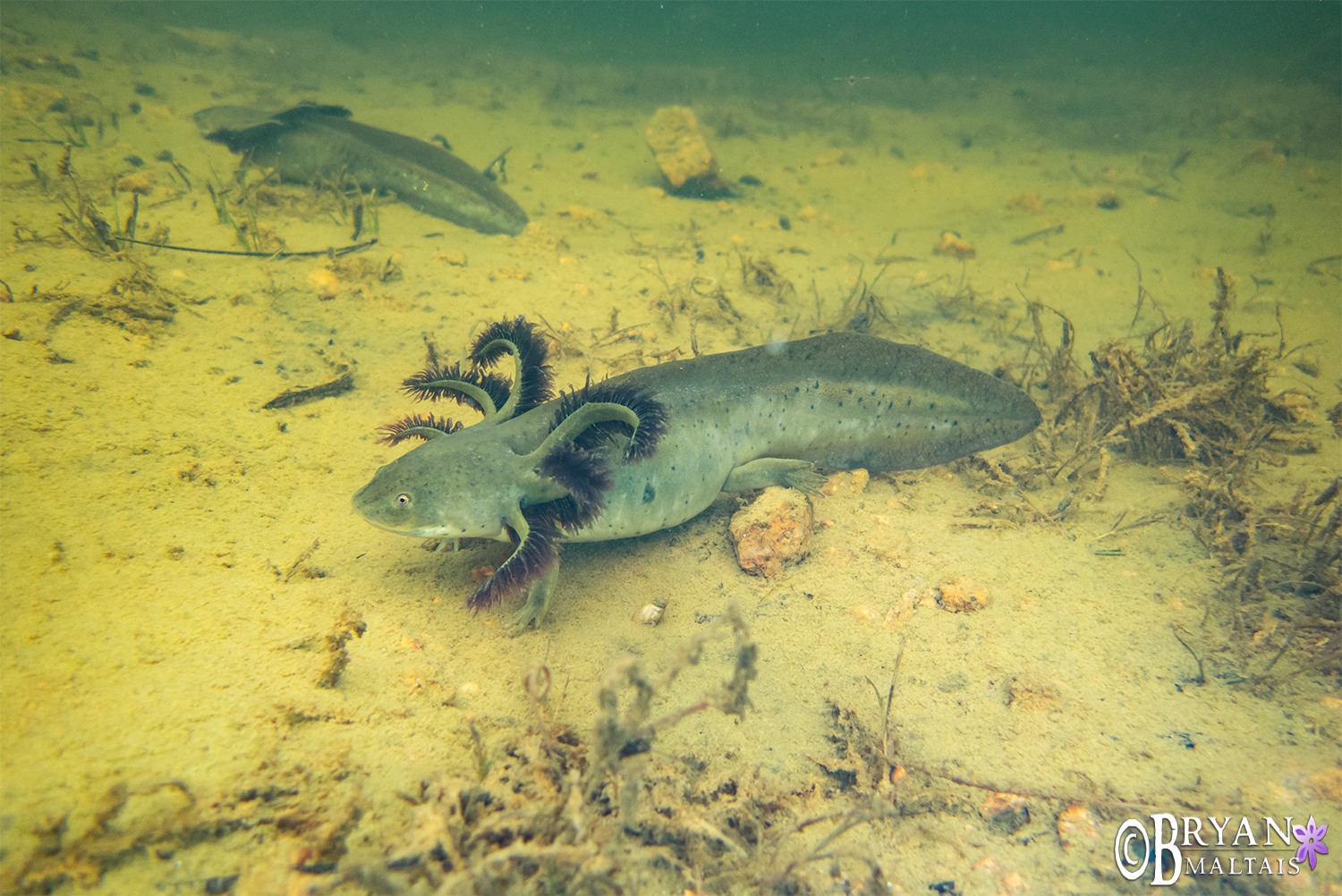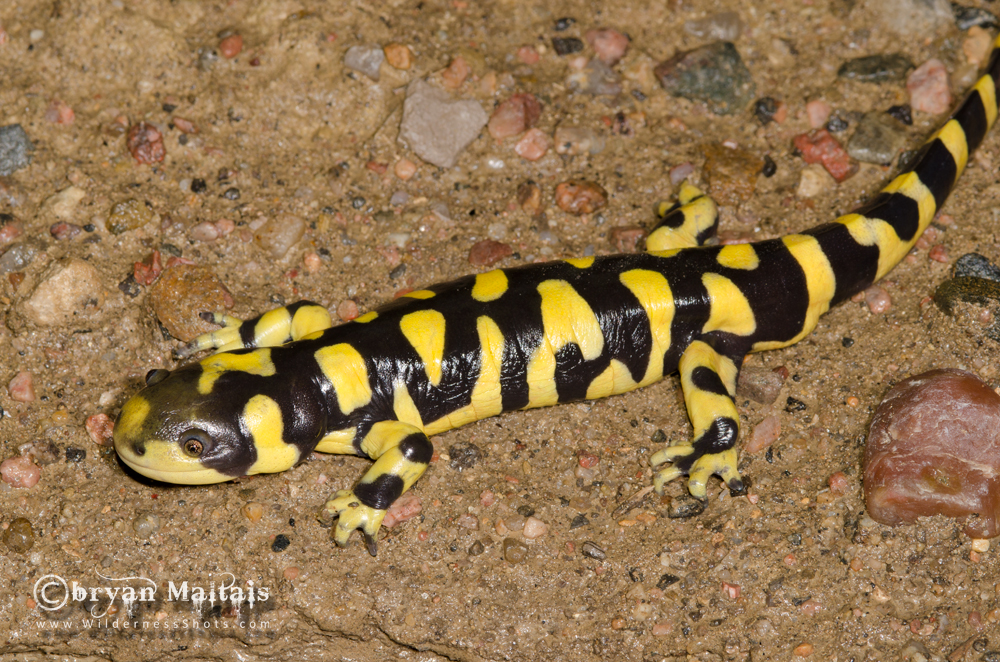
I photographed these neotenic Western Tiger Salamanders underwater standing on the shore with an underwater camera attached to a long pole.
Most bodies of water contain fish, whether by natural means or stocking by people. Occasionally you can find small ponds and wetlands that don’t contain fish. In most cases these wetlands are fishless because they’re ephemeral, meaning they fill with water in spring, and dry up in the summer heat. The drying up kills any fish that may have been introduced. Most amphibian species cannot reproduce or live in waters with fish because fish easily eat all of their eggs and tadpoles until none are left. This is why most amphibians breed in ephemeral wetlands. They lay their eggs in spring, and the larvae metamorphose onto land by the time the water begins to dry up in late summer. However, in rare circumstances when there is a body of water that is both permanent, and lacks fish, the larvae of the Western Tiger Salamander can become “neotenic”. In this example of neoteny, Tiger Salamanders are laid as eggs and then become larvae that never metamorphose because they somehow detect that there is no reason to leave the water. Normally Tiger Salamanders metamorphose into permanently terrestrial, brown and yellow salamanders adapted for land that look completely dissimilar from their fish-like larval form. Neotenic Tiger Salamanders look superficially like catfish with legs. They become sexually mature underwater and breed in their larval form. They can also become 12″ giants, which is much larger than their land-dwelling brethren. Neoteny is an unknown genetic switch that’s flipped when certain environmental conditions exist. If the pond in which I photographed these Salamanders began to dry up or was stocked with fish, it’s possible that these individuals would begin to metamorphose and leave the water. This is an example of why it’s so important to leave natural wetlands as they are, and not stock them with fish for recreation.
 This is what a non-neotenic adult Western Tiger Salamander looks like after metamorphosis.
This is what a non-neotenic adult Western Tiger Salamander looks like after metamorphosis.
